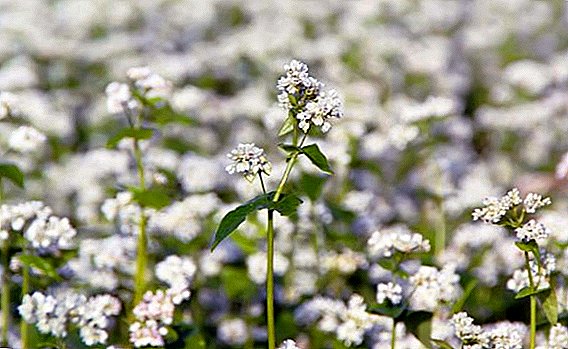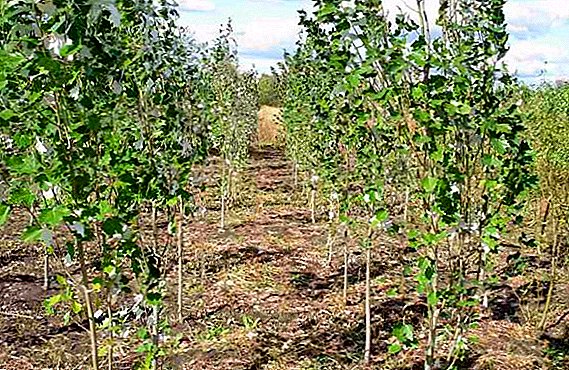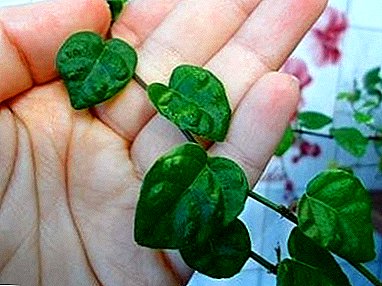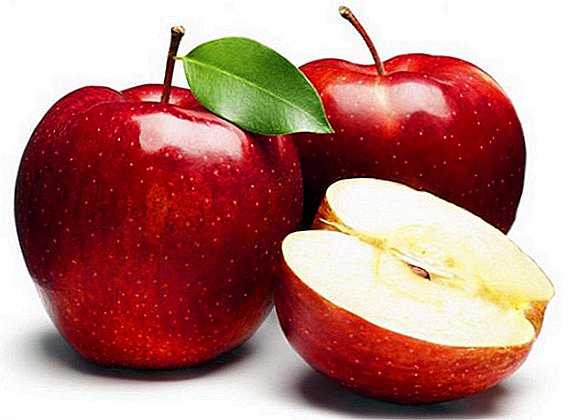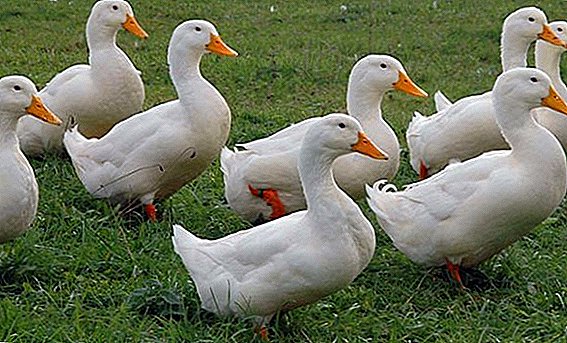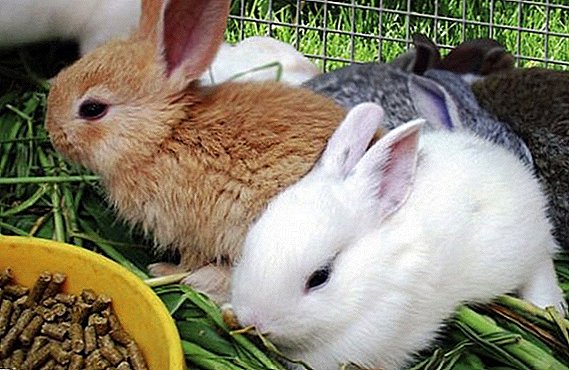 Decorative rabbits are exotic animals that have long won love from a person due to their playful disposition. They will always support any game, sit on the owner's lap and allow themselves to be stroked for a long time.
Decorative rabbits are exotic animals that have long won love from a person due to their playful disposition. They will always support any game, sit on the owner's lap and allow themselves to be stroked for a long time.
Consider all the moments of the correct content of these fluffies in the apartment, so that communication with animals brings only joy.
Can I keep a rabbit in the apartment
Like all animals that are kept in the home, rabbits deliver not only joy and emotion, but also troubles and problems for their care, maintenance and feeding. And like any animal, there are positive and negative points in the content of the decorative rabbit.
pros
The positive aspects of the appearance of a fluffy pet:
- With good care, life expectancy is up to 15 years.
- The animal is neat and, with little effort, is easily accustomed to the toilet.
- Peace-loving animals, perfectly get along with chinchillas, hamsters, various reptiles. Even cats perceive them as their own kind.
- Savvy and inquisitive, in terms of intelligence are higher than hamsters, but inferior to cats.
- Easy to train, respond to the nickname and can perform simple commands.
- Animals get along well with children, but the animal may start to languish and get sick from excessive squeezing.
- Power does not require large cash costs.

Minuses
The negative points of keeping an animal include:
- Needs constant attention, especially during a walk around the apartment.
- For the maintenance of a large aviary, which is problematic for small apartments.
- Every three months, the animals shed.
- There is a peculiar smell - not everyone likes it.
- Frequent changes in behavior due to mood swings.
- May be allergic to wool in the child.
Did you know? Rabbit eyes are arranged so that they see everything that is done behind them, without turning their heads.
Conditions of detention
For the proper maintenance of a rabbit in an apartment, it is necessary to know certain nuances:
- do not tolerate overheating;
- direct sunlight is harmful;
- ideal temperature - +20 ° C;
- air humidity - 50%;
- afraid of drafts.
 The content of the decorative rabbit in the apartment provides for the obligatory presence of a spacious cage or an aviary with all the necessary devices for normal life.
The content of the decorative rabbit in the apartment provides for the obligatory presence of a spacious cage or an aviary with all the necessary devices for normal life.Read about the most popular breeds of ornamental rabbits.
Why it is not recommended to keep in the cells
For a rabbit to be healthy, movement is very important to him. The cage with the size up to 1 meter cannot provide the necessary territory for active running, therefore the pet should be let out for walks, during which the animal:
- kneads paws;
- develops coordination of movements;
- reduces weight;
- gets prevention from diseases;
- closely communicates with the owners.
Requirements for the rabbit enclosure in the apartment
For active life, the rabbit needs an open-air cage, where it can run and jump at any time. The area of this building should be at least 2 square meters. meters per animal. Aviary should be placed along the wall, in a place where direct sunlight will not fall and there will be no draft.  To save space, this building may consist of several floors. The floor of the enclosure should be soft, in order to avoid the disease of the animal's paws on the floor, it is necessary to lay a mat of natural material. It is necessary to clean the enclosure at least once in 7 days.
To save space, this building may consist of several floors. The floor of the enclosure should be soft, in order to avoid the disease of the animal's paws on the floor, it is necessary to lay a mat of natural material. It is necessary to clean the enclosure at least once in 7 days.
Unfortunately, rabbits often get sick, so the owner of this animal should be aware of the common diseases of ornamental rabbits.
Security measures
The maintenance of a dwarf rabbit at home implies its protection from various dangers, in particular:
- It is necessary to remove all the wires in the box or lift to a height inaccessible to the pet.
- Exclude the possibility to get to the height.
- Clothes to clean the closet.
- Instead of newspapers and magazines give out a cardboard box.
- Exclude the gap behind the cabinet, where the rabbit can climb.
- The balcony door should be locked if the balcony is not glazed.

What you need for a pet rabbit
For the normal existence of an animal in an apartment, you must have:
- Mesh enclosure (available at the pet store).
- The feeding bowl must be heavy so that the animal cannot turn it over. It is desirable that it be made of porcelain or metal with a flat bottom.
- Water for drinking should be a constant attribute in the aviary, so you need to purchase automatic drinkers with a metal tip, which need to be fixed on the grid of the aviary.
- For the toilet in the aviary put a corner tray with high sides and filler.
- Rabbits should always have hay, so the ideal option is to fix a grass nursery on a cage grid.
- In order for the rabbit to hide and just relax, there must be a house on the territory of the aviary. It can be made of any available material - wood, cardboard box, woven willow branches.

What to feed and how to feed
Rabbit is a pet that does not require a varied diet. The diet of the animal includes:
- Feed - balanced feed containing the full range of essential vitamins and minerals. Babies give 1 tbsp. spoon 3 times a day. Adults - 2 times a day for 1-1.5 Art. spoons.
- Hay - A must-have product for teeth grinding. The leader in protein content is nettle hay.
- Sprigs of pear, apple, willow, aspen and poplar. In the summer, you can give branches with foliage, in winter - conifer branches.
- In the summer instead of hay give a mixture of dried herbs - Yarrow, starlet and hogweed ordinary. From dried plants fit the stems of calendula, asparagus and hops.
- Greenery - grass quinoa, dandelion, wheat grass, rhubarb leaves, clover.
- From garden plants - Radish leaves, carrots, turnips, strawberries, Brussels sprouts and Savoy cabbage, salads.
- Vegetables - Tomatoes, zucchini and seedless cucumbers, carrots and turnips.
- Fruits - in small quantities apples, pears, bananas, melons and watermelons.
 You can not give:
You can not give:
- Exotic fruits.
- Branches from sweet cherry, cherry, walnut, buckthorn, apricot, peach.
- Potatoes, nuts, red beets.
- Beans in large volumes.
- Red, white and cauliflower.
- When harvesting hay, make sure that there is no celandine, hemlock, dope, tansy.
- Products containing carbohydrates - pasta, crackers, bread and pastries.
- Candy, biscuits, sausage and other human delicacies.
In the drinker should always be clean, preferably boiled and cooled water, which must be changed every day.
Did you know? While eating the food, the rabbit performs two chewing movements per second, that is, in a minute it makes 120 movements with its jaws.
Rabbit care
Caring for an animal is not only in a properly formulated diet and cleaning its home, but also in the care of wool, claws, eyes and other parts of the body. 
Eyes, ears and nose
The rabbit needs to carry out hygienic procedures as preventive measures against diseases and monitor the condition of the eyes, ears and nose. Eyes should be clear, not clouded, without suppuration and tearing.
We advise you to find out how many years rabbits of different breeds live at home, and how to determine the age of the rabbit.
Ears are subject to regular inspection once a week and cleaning the auricle from sulfur. The procedure is carried out using a cotton swab, which gently wipe the inside of the ear, not deep down to the eardrum. If sulfur has a smell, it is a signal of the presence of parasites. Ears - an important part of the body of the rabbit, and proper care for them - the guarantee of health of the animal.
The nose is dry and clean, without discharge. If a rabbit sneezes, sniffs, or flows from his nose, this is a signal of the disease, you should contact your veterinarian for help. 
Teeth and claws
The teeth of a rabbit grow all their life, for example, the upper incisors grow 2 mm in a week. In decorative rabbits, very often the teeth grow incorrectly, which leads to frequent injuries of the oral cavity. The rabbit is in pain while chewing and ultimately refuses to eat, so they must be regularly examined, given enough hay to grind down their teeth. If the problem is not solved, it is necessary to contact the veterinary clinic, where the specialist will turn the teeth with the help of cutters.
Important! To prevent intestinal obstruction, the animal can be given a special paste to remove wool or a piece of prunes.
The claws, like teeth, tend to grow, their length becomes a problem and gives the animal discomfort, therefore, as it grows (once every 2-3 weeks), the tips of the claws must be trimmed using nail forceps or claw cutters.
Wool
Once a week, a decorative rabbit must be combed with a special brush, which allows you to comb out the fallen wool. Also, this procedure makes it possible to deal with the formation of the pellets, which the rabbits lick themselves. Animals like to be combed - they associate it with stroking. Every day, the animal must be combed during shedding, when the wool falls out in tufts.  The rabbit licks excess wool itself, but this can be fraught with pieces of hair in the intestine, which causes its obstruction. It is not recommended to bathe the animal, unless it is absolutely necessary. Wet wipes or a wool conditioner can be used to remove contaminated areas.
The rabbit licks excess wool itself, but this can be fraught with pieces of hair in the intestine, which causes its obstruction. It is not recommended to bathe the animal, unless it is absolutely necessary. Wet wipes or a wool conditioner can be used to remove contaminated areas.
Sex organs
Although the rabbit cleans itself, the owner must check the state of the genitals daily. They must be kept clean. If the animal has diarrhea, the rabbit should be helped by washing it under running water. This is especially true of long-haired breeds, in which the fecal masses stick to the fur.
Read how to determine the sex of a rabbit.
Rabbit toys
Inquisitive animals need something to do and have fun. Toys for him can be purchased at the pet store, and if you show imagination, you can do it yourself. The main thing is to remember that toys must meet his needs - dig the ground and grind his teeth. As accessories for digging you can use:
As accessories for digging you can use:
- Cardboard or plastic boxes with earth or sand.
- Baskets of twigs, filling them with hay.
- To make a tunnel out of a cardboard tube, having filled a small part of it with pieces of paper - the rabbit will hide there and build a hole.
- Artificial grass mat.
Learn how to choose toys for decorative and dwarf rabbits.
Toys that you can nibble for grinding your teeth:
- Spruce cones preheated in the oven to remove various insects.
- The branches of trees, especially apple trees - rabbits love to bite the bark of these trees.
- Children's toys made of hard plastic without small details, such as eyes or buttons.
 Toys that can be torn:
Toys that can be torn:
- Old kitchen towel - animals love to play with rags, they can just knead or vomit.
- A cardboard tube of toilet paper filled with hay with a piece of some delicacy.
Toilet fixtures
Properly equipped place for rabbit excrement - a pledge of cleanliness in the apartment. First of all, you need to buy an ordinary plastic cat litter tray of a sufficiently large size, remove the grate and fill in large-sized sawdust. Other material may be hay, straw, or torn paper (not newspapers).
Important! Cat litter can not be used, because the granules are saturated with chemicals, and rabbits love to taste everything.
Where to place
Rabbits are clean animals and, under natural conditions, they are never able to cope with their homes. Living in captivity, in cages or cages, they go to the toilet in the same place. Therefore, so that the owners of the fluffs do not have problems with toilet training, you just need to look after this place and install the tray. Usually the rabbit chooses the corner of the cage. The animal should move, and, of course, it will walk around the room, where you also need to install a tray (preferably two) in the far corners, just as beforehand notice the places that the rabbit will choose. Perhaps at first the animal will not go to an unfamiliar object, the owners need to be patient, and over time everything will turn out. 
How to teach the rabbit to the tray
The animal very well gives in to training, therefore, having gathered patience, we start the decision of not such and difficult problem:
- We determine the code word, for example, "toilet", "here."
- We set the tray to the chosen place, speaking the code word as a mantra. This procedure should be carried out in front of a rabbit.
- We follow the behavior of the animal - as soon as it sits down to defecate, you need to carefully, so as not to frighten, lift and transfer it to the tray, repeating the code.
- If you can not catch the moment of going to the toilet, you need to collect the pellets, put in the tray, put the animal down and let it smell your stool. They do the same with urine: a rag that has been wiped off, put in a rabbit toilet and also allowed to smell the animal.
Did you know? In some states of Australia it is forbidden to keep rabbits as pets. Violation of the ban is punishable by high fines.
How to get rid of the smell of urine in the apartment
If a persistent odor of urine occurs in an apartment, it is necessary to establish the reasons for its appearance, and there may be several of them:
- Dirty aviary - daily cleaning and wet cleaning of the area will minimize the appearance of odor. The place where the crawl urinated should be thoroughly cleaned with vinegar.
- Not a neutered male - during puberty, the rabbit starts marking the territory, and if you are not going to breed animals, it is better to neutered it, which will save your apartment from such a problem as the smell of urine.
- Strong smell and discoloration of urine can be a signal for the development of the disease - you need to see a veterinarian.
 Decorative dwarf rabbits are not only beautiful animals, they are smart and with good care can become true friends for humans. With the proper organization of housing and food, the animals will delight you with their good mood, fluffy fur and active movements.
Decorative dwarf rabbits are not only beautiful animals, they are smart and with good care can become true friends for humans. With the proper organization of housing and food, the animals will delight you with their good mood, fluffy fur and active movements.
Reviews
In short, if you intend to keep the rabbit in a cage, feed him and clean the cage, and this means care, then don't take it. Rabbit is not for this. Spoil the animal and instill in the child the idea that the beast is a type of fun. A rabbit is a type of cat or dog. Just messing with him even more. Need necessarily toys, vitamins, hay better to stock up, and not to buy. Sawdust will be all over the apartment. In short fuss mass. This is not a parrot. And it is necessary to punish. And chat with him.


